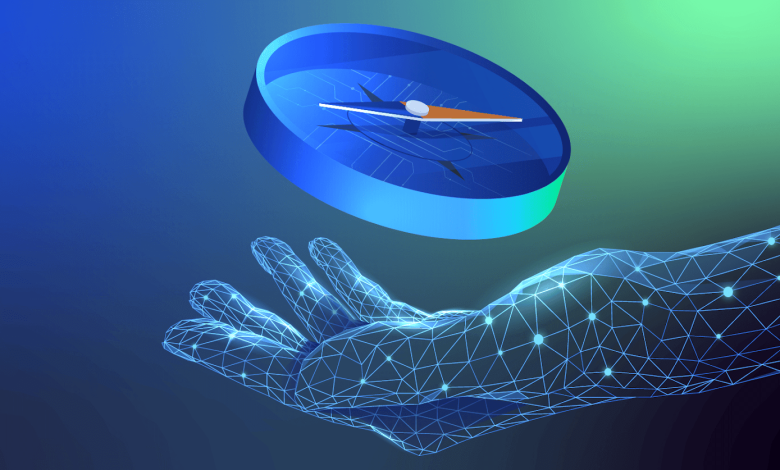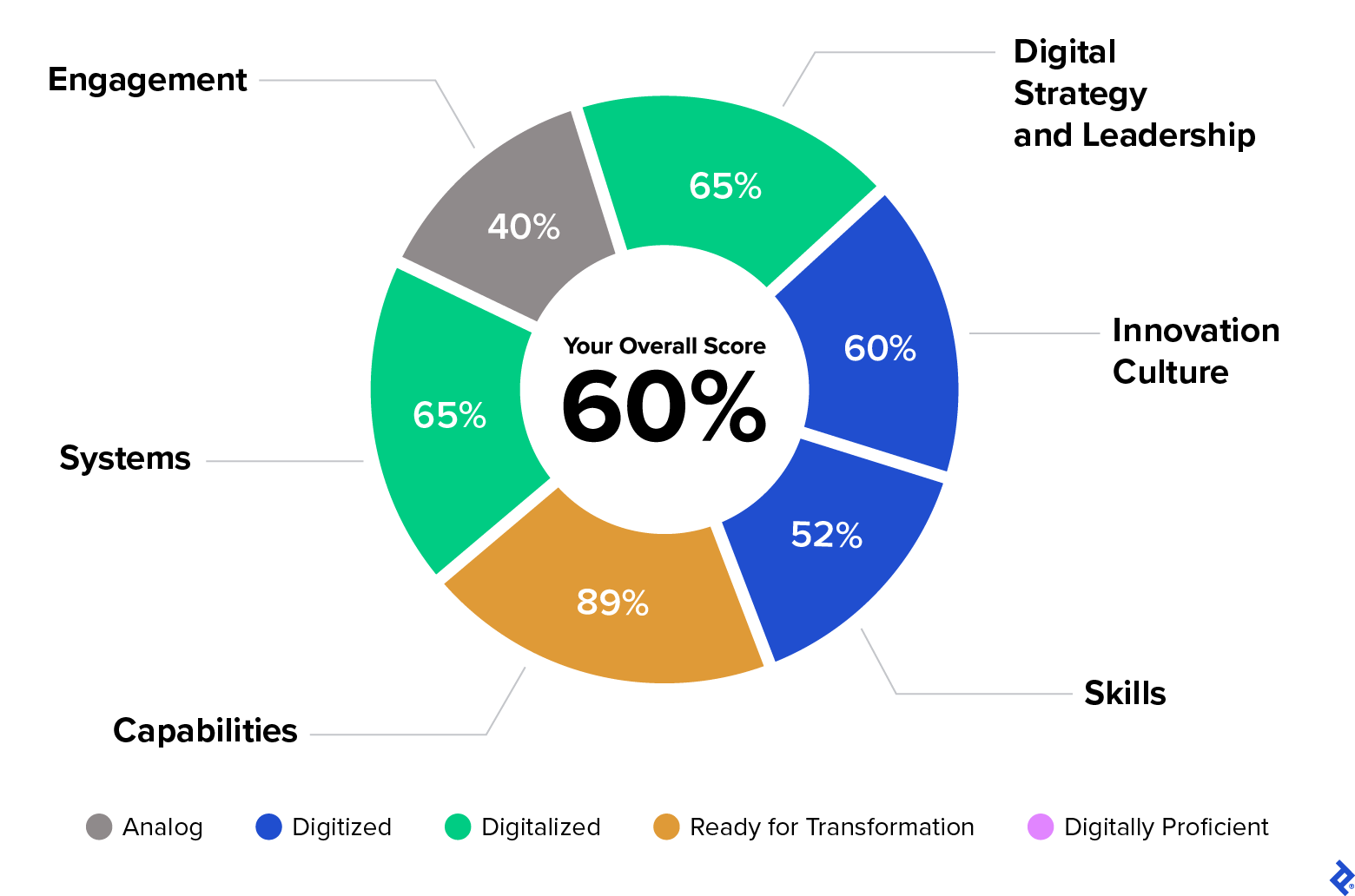Seamless Technology Adoption for Your Company

Since the launch of ChatGPT at the end of 2022, I have witnessed a tidal wave of companies clamoring to integrate artificial intelligence (AI) technology into their product suites. Many of these companies still have legacy systems in place across the business, so bolting an AI solution onto existing technologies is not wholly effective. What these companies need is a digital transformation.
A full-scale digital transformation is viewed by many executives as a risky and costly undertaking, requiring an upheaval of business processes, operations, and even revenue strategy. Poor or incomplete execution can cause vast amounts of damage without providing the promised return on investment. Implementing a bad infrastructure, choosing buggy software, or failing to provide adequate training can impact operations and lead to an unhappy workforce.
But the risks associated with not embarking on a digital transformation are worse, as illustrated by companies such as Myspace, BlackBerry, and Toys R Us: gradual stagnation, loss of market share, and even bankruptcy. Being unprepared to integrate emerging technologies also limits the access employees have to modern tools and platforms, harming engagement, skill development, productivity, and the ability to attract and retain talent.
Technology adoption isn’t just a problem for legacy companies born before the digital age. Corporate wheels turn a lot slower than the pace of technological change, and many leaders who do embrace change encounter difficulties implementing new technologies. While 96% of decision-makers in the UK have made efforts to improve digital adoption, the same percentage have experienced challenges with the adoption process, and only 37% rated their company’s digital adoption as “excellent,” according to a 2022 study.
A Framework for Assessing Digital Maturity
Over the course of my project management career I have overseen digital transformation, cultural change, and software implementation in a range of industries, including technology, education, and healthcare. No matter the sector or size, I found that six areas were key to assessing and addressing digital maturity: engagement, digital strategy and leadership, innovation culture, skills, capabilities, and systems.
These six areas became the basis for a technology adoption framework and free online assessment tool I developed: the EDISCS framework (an acronym based on the six areas). The framework comprises a rubric of 32 questions that reveal where organizations are positioned in their digital journey. By answering them, business leaders can generate an analysis of each area that outlines the current digital status of their organization, and its position on what I call the digital continuum, as well as obtain advice on how to progress.
The Four Phases of the Digital Continuum
To ensure your journey toward digital proficiency is a successful one, it’s important to understand where your company currently stands. In order to give context to an organization’s digital maturity, I developed a continuum that classifies four stages of technology adoption: digitization, digitalization, digital transformation, and digital proficiency. The EDISCS framework pinpoints where your organization falls on this spectrum.

While the context and circumstances vary, every business should traverse these four key phases. It is vital to not skip stages as, in addition to providing value, each one also creates the conditions needed to succeed in the following stage.
Digitization
Digitization is the most foundational layer and represents a stage most companies should have reached already. It involves converting analog information into digital form—basic examples of this might be converting paper documents into PDFs to store them digitally, or starting a spreadsheet for accounting rather than using a handwritten ledger.
|
Digital Continuum Phase 1: Digitization |
|
|---|---|
|
Main goals |
|
|
Key challenges |
|
|
Top tip |
Focus on training staff and demonstrating the benefits of digitization to reduce resistance. |
Digitalization
This adoption stage moves beyond digitization by integrating digital technologies into everyday processes. This could mean implementing an online booking system or a bookkeeping software platform.
|
Digital Continuum Phase 2: Digitalization |
|
|---|---|
|
Main goals |
|
|
Key challenges |
|
|
Top tip |
Be swift with implementation but patient with adoption, allowing time for people to adapt to the changes. |
Digital Transformation
Digital transformation means a comprehensive shift in organizational culture and operations to fully embrace digital technologies and use them to inform decisions. An example of this would be using data analytics to shape long-term strategy, potentially shifting the company’s core offering and market operations.
|
Digital Continuum Phase 3: Digital Transformation |
|
|---|---|
|
Main goals |
|
|
Key challenges |
|
|
Top tip |
Secure leadership buy-in by aligning the motivations of the executive team with the organization’s digital ambitions. |
Digital Proficiency
Digital proficiency is the successful adoption and seamless integration of technologies across the business. This means utilizing technology to maximize internal capabilities and stay ahead of industry trends, identifying new opportunities, and adapting the business model proactively to meet customer demands and create competitive advantage.
|
Digital Continuum Phase 4: Digital Proficiency |
|
|---|---|
|
Main goals |
|
|
Key challenges |
|
|
Top tip |
Invest in ongoing skill development to stay ahead of technological advancements and industry changes. |
Achieving digital proficiency should be the ultimate goal for any organization that expects to be around in 10 years. But mapping the route is useless without plotting your current position: Knowing where your organization is on its journey to digital proficiency will ensure your efforts are not wasted.
A Detailed Look at the EDISCS Framework
In the remainder of this guide, I detail the six areas of the EDISCS framework and describe in depth how the tool evaluates them.

1. Engagement
Leaders often perceive customer engagement as a natural foothold, given that the feedback loop is relatively short and metrics can be clear-cut. Are you selling your services online? Are customers buying them? Although the answers to these questions are a good indicator of how robust your online presence is, there is more to this step than understanding how people buy from you: Engagement is also about listening. When evaluating the state of customer engagement in your company, the tool will ask questions such as:
- What percentage of your customer interactions are digital?
- How well do you integrate customer feedback into your digital strategies?
- How responsive are your digital customer service channels?
It’s important to not only collect customer satisfaction data, but also to efficiently process and act upon it—and for these activities to be part of your company’s overall product and marketing strategy.
2. Digital Strategy and Leadership
The attitude of leadership is a significant indicator of whether an organization will achieve digital proficiency, since a lack of buy-in can significantly hamper technological progress. To assess this area, the tool will ask questions such as:
- Who is responsible for overseeing digital strategy implementation?
- How frequently is the digital strategy reviewed and updated?
- What is the level of digital literacy among your leadership team?
Given the pace of change, standard five-year plans rarely remain relevant for their entire duration. A truly digitally proficient organization will have leaders who are willing to view digital processes and tools as central to the business strategy, have their finger on the pulse of digital advances, and welcome new challenges and opportunities.
3. Innovation Culture
In a business environment, culture is a difficult area to assess. Unofficial conversations, attitudes toward paid time off, implicit reporting structures—these are all seemingly intangible cultural indicators. But there are clear ways to determine whether innovation, specifically, is baked into an organization’s culture, including how much of the budget is dedicated to experimenting with innovative products and whether there are incentives for employees to innovate. Additionally, the following types of questions will help determine where your company resides on the innovation spectrum:
- What is the level of support for innovative projects and ideas?
- How frequently do you run innovation workshops or training?
- How are new ideas evaluated and implemented?
If an organization treats innovation as an exciting portal into the future rather than a drain on resources, it is more likely to take advantage of opportunities that arise through developments in digital technology.
4. Skills
If each employee in your organization was given a new piece of hardware, how many would use it as a paperweight? The technology you have is only as good as the workforce’s ability to use it. In order to evaluate this area, the tool will ask questions such as:
- What is the current digital skill level of your workforce?
- How regularly do you provide digital skills training and development?
- How well do employees adapt to new digital tools and processes?
Your business must actively promote learning new digital skills and provide adequate training options for new technology products, as well as keep employees abreast of technological advancements pertinent to their role or industry. The more the organization does this, the more widespread adoption of new technologies will be, and the more likely the organization is to reach digital proficiency.
5. Capabilities
We all know the saying “data is the new oil”—incredibly valuable, but it must be processed to be used. Your organization’s data management and analysis capabilities are the focus for this area, that is, how well it is managing the input, storage, and processing of data. For this area, the tool asks questions such as:
- To what extent do you use data analytics to drive decision-making?
- How well is data integrated across your organization?
- What data governance policies are in place?
The ability to analyze and draw actionable insights from your data is a core component in the longevity of any digital adoption efforts.
6. Systems
An organization’s technological infrastructure is, of course, integral to the framework. The robustness, security, and scalability of your systems—comprising hardware, software, and networks—are essential components in evaluating your digital maturity and how well positioned you are for product adoption:
- What is the level of integration across your digital systems?
- How resilient are your systems to cyberthreats and disruptions?
- How frequently is your infrastructure updated and maintained?
An understanding of the budget allocated to maintaining and updating systems is also a key indicator of where the company currently is and where it is going.
The Technology Adoption Analysis
Following an assessment of the six areas using a scorecard approach, the tool offers a color-coded chart showing your organization’s position on the digital continuum and in each area. Here’s an example:

Every organization’s digital maturity will look different, even within the categories outlined, so working with someone who has experience in these areas and in advising senior executives can be hugely valuable in further customizing the technology adoption process.
Applying the framework to a large UK university, for example, revealed its skills were still in the digitized phase, reflected in a low level of digital literacy among its staff and many outdated processes. We created and implemented standard operating procedures for innovation and product development, as well as training programs for the workforce. Through collaboration with leadership, we were able to position technological progress more centrally within the school’s core strategy. Doing this enabled the university to increase its overseas postgraduate online offerings, providing new revenue streams.
Here are some additional tips to streamline the digital adoption journey:
- Assess and act: The framework and tool can be used to develop a comprehensive and well-defined adoption strategy for business transformation. Although digital proficiency is the ultimate goal, concentrate your efforts on the nearest horizon, advancing in each of the six focus areas.
- Involve everyone: Customers, leadership, employees, and suppliers should all be involved in the journey so that the changes are holistic and sustainable. Successful implementation is an organizationwide effort.
- Measure everything: Conduct regular reviews and set SMART goals for each of the six areas. Make sure everyone is clear on what success looks like at every level, not just the end goal. Don’t try to boil the ocean.
Embark on the Journey to Digital Proficiency
To achieve long-term success, leaders must formulate a strategic roadmap for digital adoption and gain the buy-in of all key stakeholders. Business transformation efforts are likely to yield noticeable enhancements in efficiency and competitive positioning, but they demand patience, perseverance, and an ongoing commitment to innovation and skills development.
The EDISCS framework outlined in this article offers a structured approach to gauge and improve digital maturity across six critical areas. By using the tool to pinpoint their current standing, organizations can strategically tackle specific implementation challenges with tailored actions.
The path to digital proficiency is neither swift nor straightforward, but traveling it is imperative for organizations aiming to secure a competitive advantage. Ultimately, organizations that methodically progress along the roadmap through the stages of digitization, digitalization, and digital transformation and toward digital proficiency will not only survive but excel, ready to embrace innovation in an ever-evolving digital landscape.



